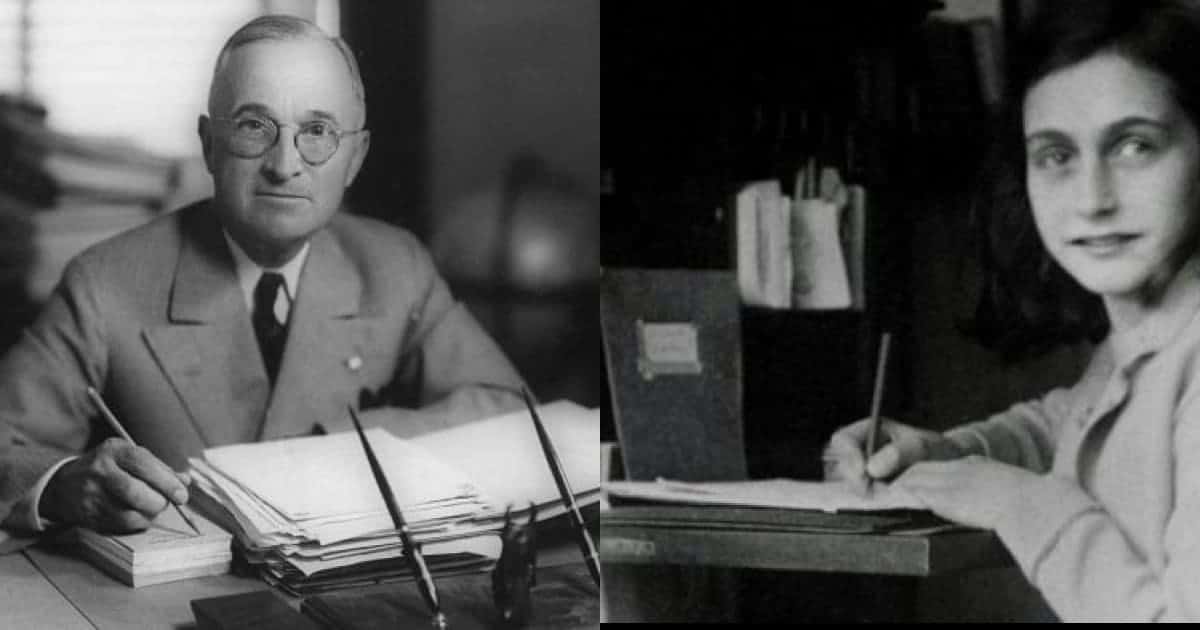For both the dedicated historian and wider reader alike, diaries offer an unrivalled glimpse into past lives. Not only do they record the mundane, they can often serve as unique, eye-witness accounts of major historical events. Of course, some diaries are more useful than others. The vast majority of journals are of little interest to anyone but the person who wrote them. Some, however, are hugely important. They help give a unique perspective of past times, boosting our understanding in a way history textbooks never can.
Interestingly, the most important diaries of all time have been penned by a wide range of individuals. While presidents and kings may pull the strings and be in the privileged position of being able to give first-hand accounts of momentous decisions, the accounts of ordinary people are often just as interesting – and just as useful to the historian.
So, from schoolgirls to scientists and from presidents to explorers, here we have 10 of the most important diaries ever written:

The Diary of Samuel Pepys
When the 27-year-old Samuel Pepys first started keeping a diary, he kept things simple. It was January 1660 and he was a family man with a steady job in the city of London. Over time, however, his writing changed. Rather than focusing on the mundane, he started looking both outwards and inwards, exploring the vibrant city around him while also discovering his own personality and character. Pepys would write his diary for almost a whole decade and, for his efforts, he would go on to be regarded as the ‘greatest diarist in English literature’.
As a government worker in the capital of Britain, Pepys had a unique insight into the workings of the city. More importantly, however, he was an eyewitness to some of the most important episodes of the English restoration period. Not only did he live through the Great Fire of London in 1666, he also saw first-hand the Great Plague sweep through the city. Plus, his career, which saw him rise to the office of Chief Secretary to the Admiralty not only meant that he got to meet both King Charles II and his successor King James II, but he was also in a position of influence during the Second Dutch War.
However, it’s not just the historical importance of Pepys’ 1 million words which has made his diary such a literary phenomenon. Ever since the 19th century, when his writings were published for a wider audience, readers have enjoyed the honesty of his writings. Throughout, Pepys admits his weaknesses, foibles and insecurities. What’s more, he even confessed his raunchy affairs with theatres actresses in the pages of his diary, giving a unique insight into love and relationships in 17th century England.
It was only when he feared that writing by candlelight would eventually cause him to go blind did Pepys give up his diary. The last entry was that of 31 May, 1699. Scholars of Pepys note that, by that point, he had lost much of the joy and exuberance which characterised his earlier writings. His final few entries were sad and remorseful and four years after he closed his diary for good, Pepys died. Thankfully for us, right before his death, he contemplated burning his journals, perhaps embarrassed by his youthful ways or constant infidelities, but changed his mind. Now, the original pages can be viewed in the library of Cambridge University, though the diary has been reproduced many times over the decades and has even inspired theatre productions, plays and TV adaptations.

